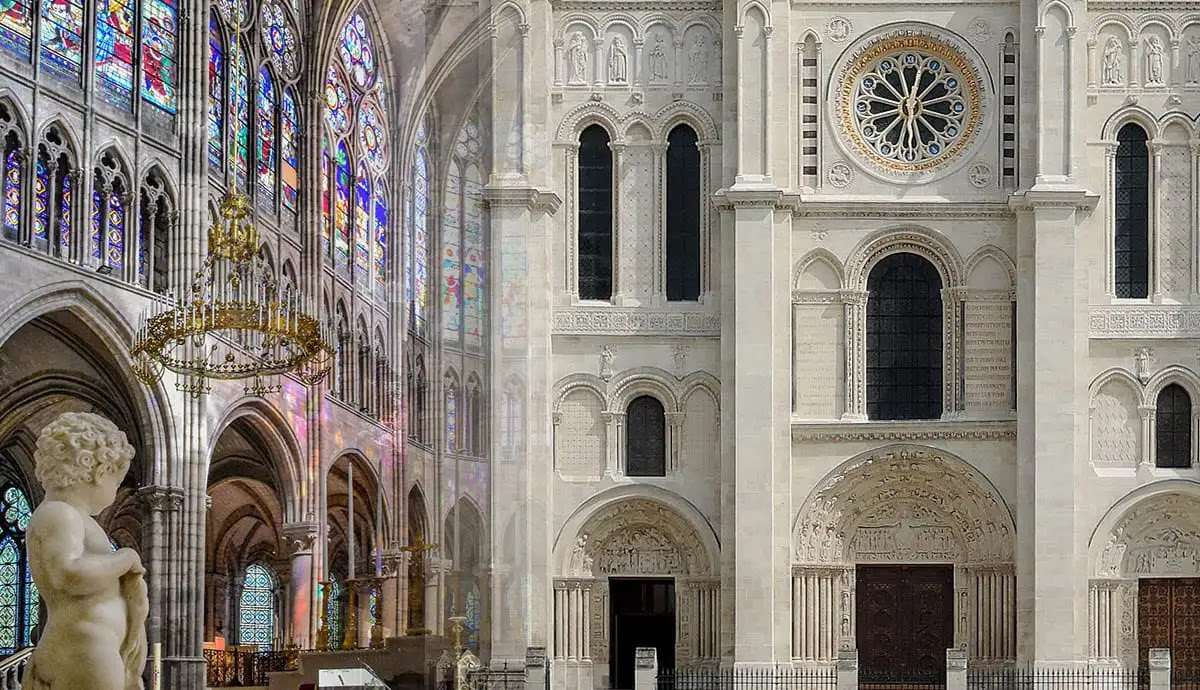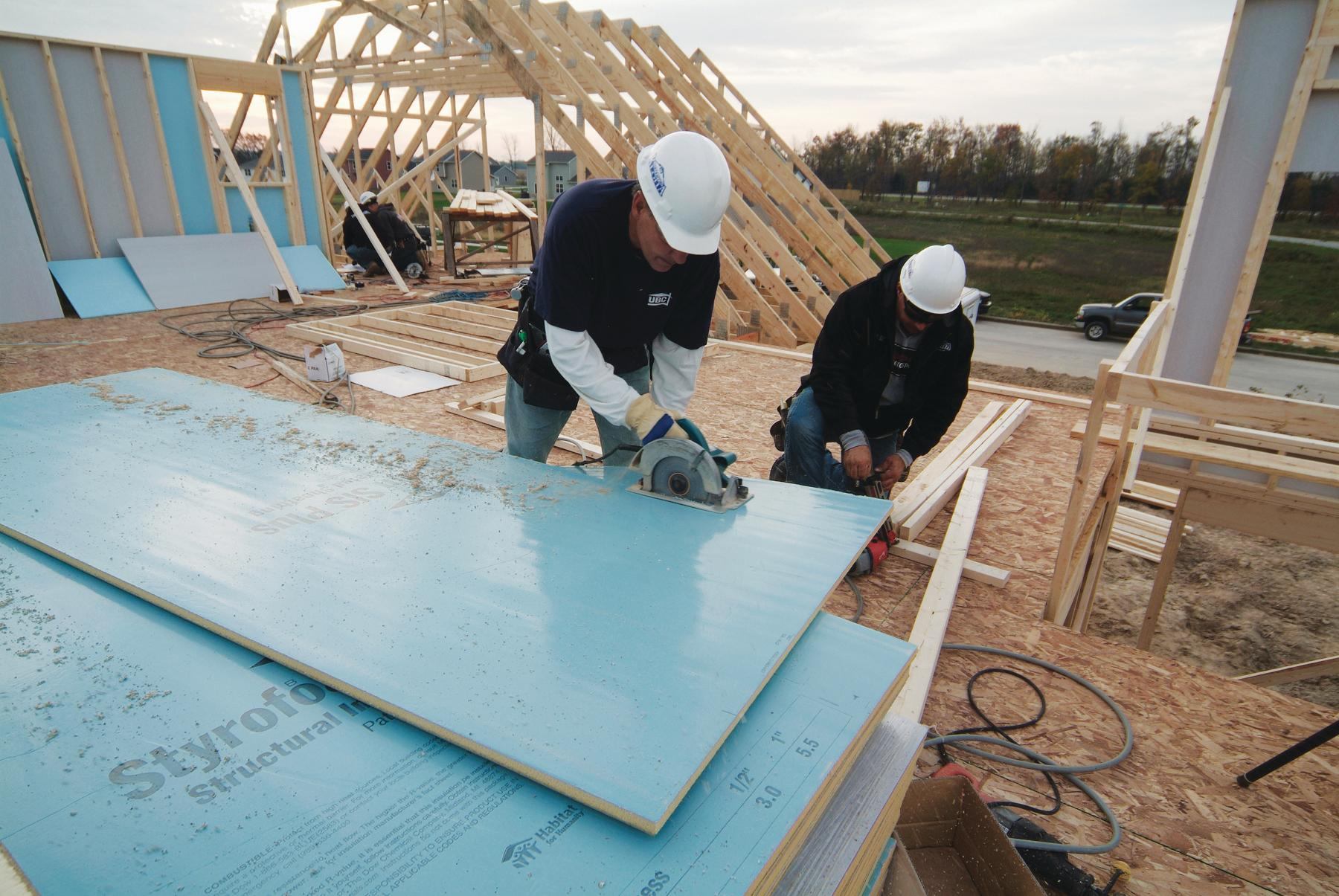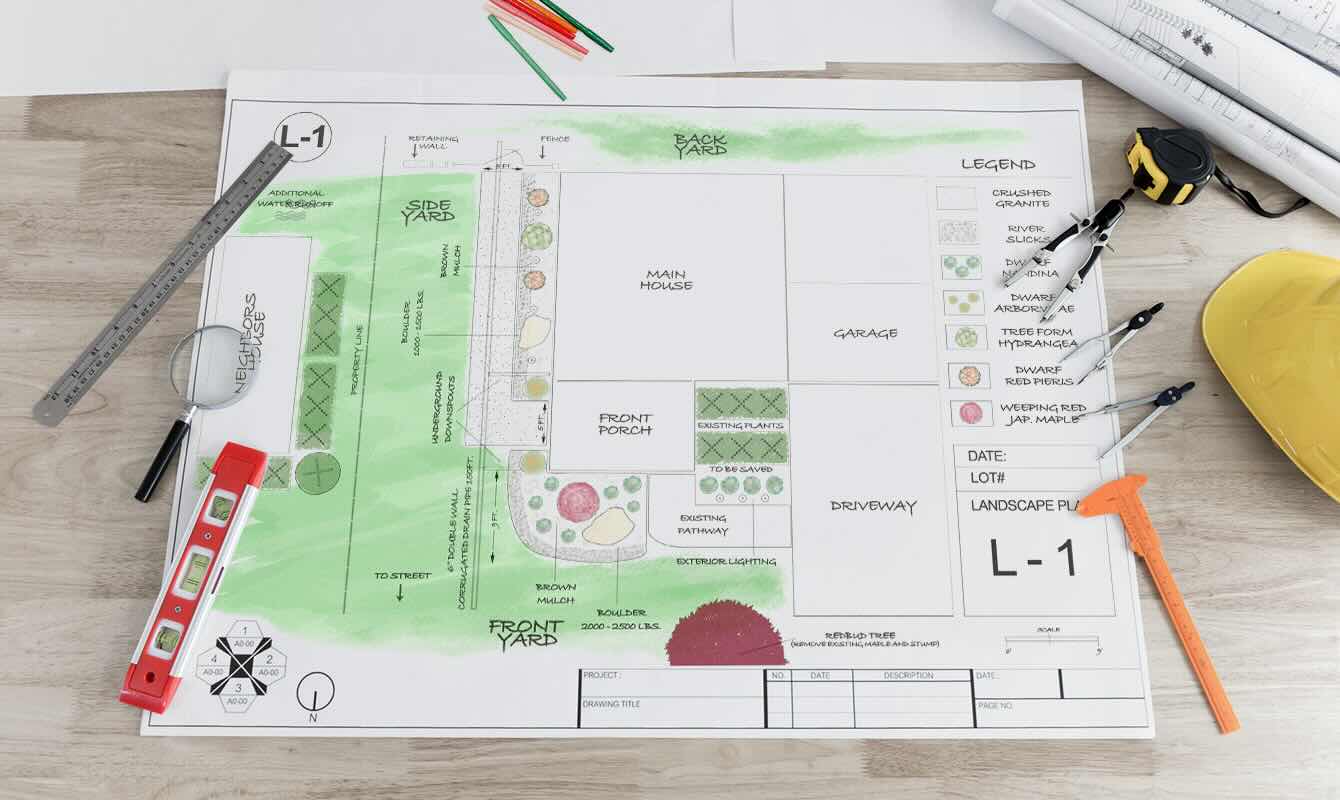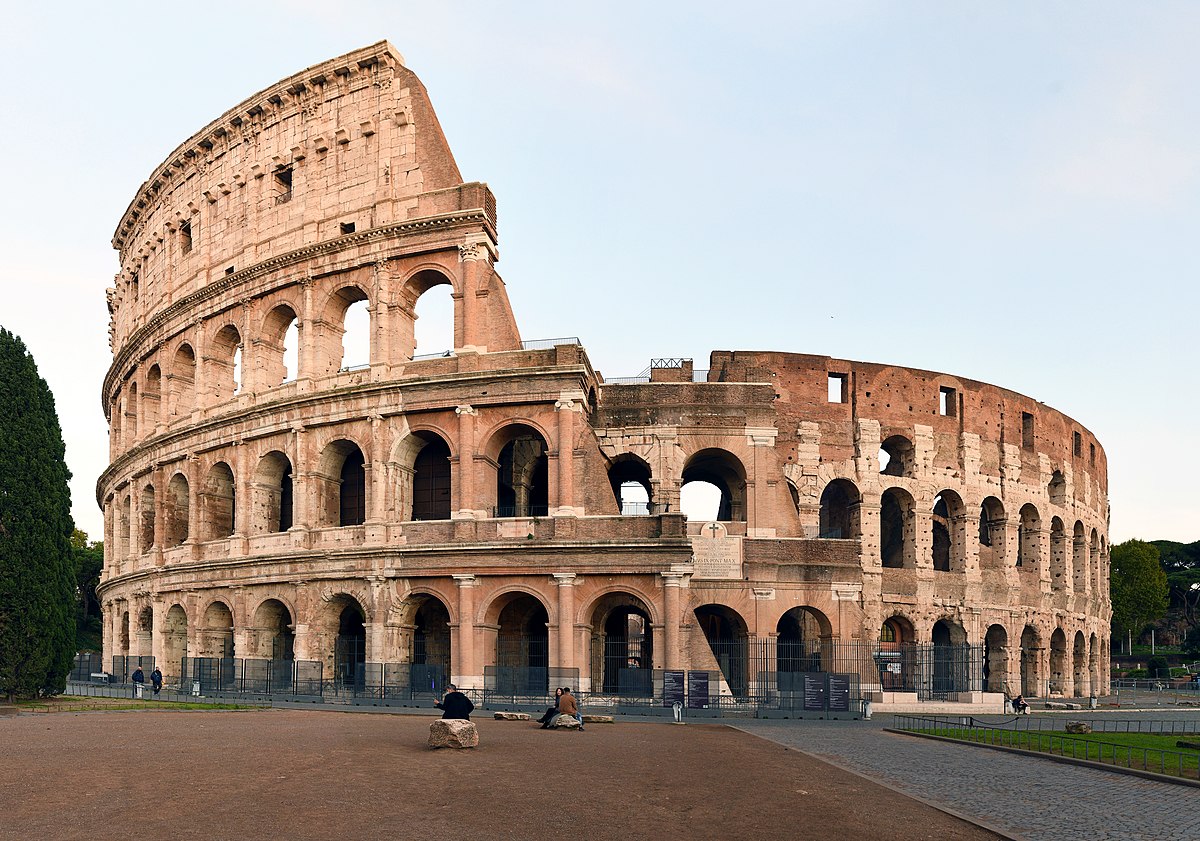Home>diy>Building & Construction>What Is Said To Be The Earliest Gothic Structure In France Who Was The Director Of Its Construction


Building & Construction
What Is Said To Be The Earliest Gothic Structure In France Who Was The Director Of Its Construction
Modified: March 6, 2024
Discover the captivating history of the earliest Gothic structure in France, built under the direction of a renowned building construction director.
(Many of the links in this article redirect to a specific reviewed product. Your purchase of these products through affiliate links helps to generate commission for Storables.com, at no extra cost. Learn more)
Introduction
The Gothic architectural style has left an indelible mark on the landscape of France. With its soaring vaults, intricate tracery, and emphasis on verticality, Gothic structures are some of the most iconic and awe-inspiring buildings in the world. In France, the birthplace of Gothic architecture, numerous structures stand as testaments to the skill and vision of the architects who brought this style to life.
While many Gothic structures in France are well-known and celebrated, there is one particular building that holds the distinction of being recognized as the earliest Gothic structure in the country. This article aims to explore this remarkable building, delve into the historical background of the Gothic style in France, and shed light on the director of its construction.
To truly understand the significance of this early Gothic structure, it is crucial to appreciate the context in which it was built. The evolution of the Gothic style in France can be traced back to the 12th century, during a period known as the High Middle Ages. This era witnessed a shift in architectural preferences, with a move away from the heavy Romanesque style towards a lighter and more graceful aesthetic.
Early Gothic structures emerged as a result of experimental architectural techniques and innovative design elements. These buildings sought to create a sense of harmony and beauty through the meticulous use of pointed arches, ribbed vaults, and flying buttresses. The goal was to create structures that seemingly defied gravity, inspiring a feeling of awe and wonder in those who beheld them.
Now, let us turn our attention to the identification of the earliest Gothic structure in France. Through architectural analysis and historical evidence, experts have determined that the honor belongs to the magnificent Notre-Dame Cathedral in Paris. This iconic structure, with its ornate facade, towering spires, and stained glass windows, stands as a testament to the innovative spirit of Gothic architecture.
Key Takeaways:
- The Notre-Dame Cathedral in Paris is the earliest Gothic structure in France, showcasing innovative architectural features like ribbed vaults and stained glass windows, influencing future buildings and serving as a cultural icon.
- Jean de Chelles, a talented architect, played a significant role in constructing the Notre-Dame Cathedral, contributing to its stunning exterior design and interior layout, leaving an enduring legacy in Gothic architecture.
Historical Background: The Gothic Style in France – Importance of Early Gothic Structures
The Gothic architectural style first emerged in France during the 12th century and quickly gained popularity throughout Europe. It was a departure from the previous Romanesque style, with its heavy and solid forms. Gothic architecture introduced an entirely new way of building, focusing on light and height, and utilizing innovative techniques to achieve breathtaking structures.
The importance of early Gothic structures in France cannot be overstated. These buildings were not just places of worship or functional edifices; they were symbols of power, prestige, and the advancement of society. They represented the artistic and engineering achievements of their time and reflected the cultural, social, and religious values of the communities that built them.
Early Gothic structures, such as the Notre-Dame Cathedral in Paris, served as visual statements of the church’s authority and the piety of the people. These grand structures were intended to inspire awe and reverence, drawing believers closer to God. The intricate detailing and craftsmanship showcased the skill of the architects, craftsmen, and artisans who brought these buildings to life.
Beyond their religious significance, early Gothic structures also played a crucial role in the development of architectural techniques and design principles. These buildings pioneered the use of ribbed vaults, pointed arches, and flying buttresses, which allowed for greater height, more expansive interiors, and increased natural light. The innovations introduced in early Gothic structures laid the foundation for future architectural advancements and influenced the development of Gothic architecture throughout Europe.
Moreover, early Gothic structures in France served as cultural and historical milestones. They were witnesses to significant events, embodiments of local and national identity, and repositories of collective memory. These buildings acted as focal points for communal gatherings, celebrations, and religious rituals, shaping the social fabric of the communities they served.
It is important to recognize and appreciate the importance of these early Gothic structures in France, not only for their architectural beauty but also for the cultural and historical significance they hold. They continue to captivate visitors from around the world, standing as enduring symbols of human creativity, ingenuity, and devotion to artistic excellence.
Identification of the Earliest Gothic Structure in France: Architectural analysis – Historical evidence
Among the myriad of Gothic structures in France, determining the earliest one requires a careful blend of architectural analysis and historical evidence. Through meticulous research and examination, experts have identified the Notre-Dame Cathedral in Paris as the earliest Gothic structure in the country.
Architectural analysis is one key method used to identify the early Gothic building. Certain architectural elements are characteristic of the Gothic style, including pointed arches, ribbed vaults, and large stained glass windows. These features create a sense of verticality and lightness, distinguishing Gothic architecture from its Romanesque predecessors.
Upon studying the architectural details of Notre-Dame Cathedral, it becomes clear that these defining elements are present. The cathedral’s facade showcases an array of pointed arches and exquisite tracery work, demonstrating the mastery of Gothic craftsmanship. The interior of the cathedral is adorned with ribbed vaults, allowing for a lofty and open space that symbolizes the transcendent qualities of the divine.
Historical evidence also plays a crucial role in identifying the earliest Gothic structure. Documented records and accounts from the time of construction provide valuable insights into the architectural styles prevalent during that period. While some early Gothic structures have been modified or destroyed over the centuries, Notre-Dame Cathedral has survived as a testament to its original design and construction.
Historians have traced the timeline of the cathedral’s construction, with work beginning in the 12th century and spanning several decades. This aligns with the period when the Gothic style was beginning to flourish in France. Furthermore, historical documents confirm the involvement of renowned architects and craftsmen who were instrumental in shaping the cathedral’s design.
Additionally, historical records shed light on the cultural and religious context of the time, providing further evidence for Notre-Dame Cathedral’s status as the earliest Gothic structure in France. The cathedral was the seat of the Bishop of Paris and witnessed important religious ceremonies and events. Its construction marked a significant shift in architectural styles and set the stage for the proliferation of Gothic architecture throughout the country.
Through the convergence of architectural analysis and historical evidence, it becomes evident that Notre-Dame Cathedral in Paris holds the distinction of being the earliest Gothic structure in France. Its architectural features and historical significance make it a remarkable testament to the ingenuity and innovation of the early Gothic builders.
Director of Construction: Jean de Chelles – Biographical Information – Role in the Project
One of the key figures responsible for the construction of the Notre-Dame Cathedral in Paris, the earliest Gothic structure in France, was the talented architect Jean de Chelles. Born in the late 12th century, de Chelles is recognized as a prominent figure in the history of French Gothic architecture.
Not much is known about de Chelles’ early life, but his remarkable skill as an architect became evident through his work on Notre-Dame Cathedral. He was part of a team of architects and craftsmen who worked tirelessly to bring the vision of the cathedral to life. His precise design and meticulous attention to detail contributed significantly to the successful execution of the project.
De Chelles played a significant role in devising and implementing innovative architectural features that define the Gothic style. He integrated the characteristic pointed arches, ribbed vaults, and flying buttresses into the design of Notre-Dame Cathedral, revolutionizing the way buildings were constructed during that era.
As the director of construction, de Chelles guided the team of workers and oversaw the day-to-day operations of the building site. He meticulously coordinated the efforts of the craftsmen, ensuring the cathedral was being constructed according to the approved plans and specifications.
De Chelles’ expertise extended beyond the technical aspects of construction. He also had a keen eye for aesthetic detail, ensuring the cathedral’s external facade and interior elements were harmonious and visually stunning. From the intricate tracery work on the rose windows to the delicate sculpture adorning the portals, de Chelles’ artistic vision left an indelible mark on the cathedral’s overall design.
It is important to note that de Chelles was not the sole architect responsible for the construction of Notre-Dame Cathedral. He collaborated with other talented individuals, including Pierre de Montreuil, who took over the project after de Chelles’ death. Together, these architects contributed their unique expertise, pushing the boundaries of architectural innovation.
Although de Chelles’ life and work are often overshadowed by the prominence of the cathedral itself, his contributions to the Notre-Dame Cathedral cannot be underestimated. His talent, dedication, and artistic vision helped establish the foundation for the subsequent flourishing of Gothic architecture in France and left an enduring legacy that still mesmerizes visitors to this day.
The earliest Gothic structure in France is the Basilica of Saint Denis. The director of its construction was Abbot Suger.
Architectural Features: Exterior Design – Interior Layout
The Notre-Dame Cathedral, the earliest Gothic structure in France, boasts a plethora of architectural features that make it a masterpiece of Gothic design. From its exterior design to its interior layout, every aspect of the cathedral showcases the ingenuity and artistry of its creators.
The exterior design of Notre-Dame Cathedral is breathtaking and instantly recognizable. The facade is adorned with intricately carved sculptures and statues, depicting biblical scenes and saints. The ornate rose windows, with their delicate tracery patterns, allow light to filter into the interior, casting a mesmerizing glow. The famous flying buttresses, a defining feature of Gothic architecture, not only provide structural support but also add elegance and visual drama to the cathedral’s exterior.
Stepping inside the cathedral, visitors are greeted with a magnificent interior layout that further accentuates the grandeur of the Gothic style. The soaring ribbed vaults create a sense of height and space, allowing the eye to be drawn upward towards the heavens. The systematic use of pointed arches throughout the interior adds a sense of elegance and grace to the overall design.
The meticulously designed stained glass windows are a hallmark of Gothic architecture, and Notre-Dame Cathedral is no exception. These windows, filled with vibrant colors and intricate patterns, depict biblical narratives and saints. The interplay of light and color creates a celestial ambiance within the cathedral, immersing visitors in a transcendent experience.
The layout of the interior is divided into various spaces, each serving a specific purpose. The nave, with its long central aisle and rows of pointed arches, is where the congregation gathers for worship. The choir, located towards the east end of the cathedral, is where the clergy and choir members perform sacred music and ceremonies. The ambulatory, an aisle that encircles the choir, allows for processions and provides access to the chapels dedicated to saints and key biblical events.
Notre-Dame Cathedral also houses numerous chapels, where both clergy and the laity can offer prayers and make devotions. The chapels, with their decorative altars and carefully crafted statues, provide intimate and sacred spaces for private reflection and spiritual contemplation.
Finally, the cathedral’s spires, a later addition to the original design, crown the structure and offer a commanding presence on the Parisian skyline. These soaring spires, along with the ornate flying buttresses, give the cathedral a distinctive silhouette and further contribute to its architectural beauty.
In summary, the architectural features of Notre-Dame Cathedral are a testament to the remarkable craftsmanship and vision of the Gothic builders. Its exterior design and interior layout create an atmosphere of awe and reverence, captivating all who enter. The delicate tracery, magnificent stained glass windows, and soaring vaults combine to make Notre-Dame Cathedral a true masterpiece of Gothic architecture.
Read more: What Is A Structure In Construction
Significance of the Earliest Gothic Structure: Influence on Subsequent Architecture – Cultural and Historical Importance
The Notre-Dame Cathedral, recognized as the earliest Gothic structure in France, holds immense significance not only for its architectural beauty but also for its profound influence on subsequent architecture and its cultural and historical importance.
The introduction of Gothic architecture with the construction of Notre-Dame Cathedral revolutionized the field of architectural design. The innovative features, such as pointed arches, ribbed vaults, and flying buttresses, set a new standard for construction techniques and opened up possibilities for taller, more spacious, and light-filled buildings. These advancements inspired a wave of Gothic construction throughout France and across Europe, establishing the Gothic style as the dominant architectural form for centuries to come.
The influence of the early Gothic structure is evident in subsequent architectural masterpieces. Cathedrals, churches, and other buildings erected during the Gothic era drew inspiration from Notre-Dame and incorporated similar design elements. From the majestic Chartres Cathedral to the awe-inspiring Sainte-Chapelle, the impact of the earliest Gothic structure can be seen in the soaring heights, intricate tracery, and breathtaking stained glass windows of these architectural wonders. The legacy of Notre-Dame Cathedral lives on in the continued appreciation and emulation of its architectural style.
Beyond its architectural influence, the cultural and historical importance of the Notre-Dame Cathedral cannot be overstated. The cathedral played a central role in the religious and social fabric of medieval France. It was the site of coronations and royal weddings, as well as religious processions and celebrations. The cathedral housed countless religious relics, attracting pilgrims from far and wide and contributing to the growth and prosperity of the city of Paris.
Moreover, Notre-Dame Cathedral witnessed significant historical events. It survived the tumultuous French Revolution, serving as a symbol of resilience and endurance. The Gothic masterpiece also witnessed the Liberation of Paris during World War II, standing as a reminder of the nation’s heritage and inspiring hope in times of adversity.
Today, Notre-Dame Cathedral remains a prominent cultural icon, attracting millions of visitors who marvel at its architectural splendor and historical significance. The cathedral’s preservation and restoration efforts reflect a collective commitment to safeguarding our shared architectural and cultural heritage. Its resilience in the face of challenges serves as a testament to the enduring power and resilience of human creativity and ingenuity.
In summary, the earliest Gothic structure in France, Notre-Dame Cathedral, holds tremendous significance. Its architectural innovations have shaped the course of architectural history, leaving an indelible imprint on subsequent buildings. Its cultural and historical importance as a place of religious worship, royal ceremonies, and witness to historical events further solidify its significance as a symbol of human achievement and enduring legacy.
Conclusion
The Notre-Dame Cathedral in Paris, identified as the earliest Gothic structure in France, stands as a testament to the enduring legacy of Gothic architecture. With its breathtaking exterior design, featuring intricately carved sculptures, rose windows, and flying buttresses, and its awe-inspiring interior layout, characterized by ribbed vaults, pointed arches, and stunning stained glass windows, the cathedral continues to captivate visitors from around the world.
The significance of the Notre-Dame Cathedral extends beyond its architectural beauty. It played a pivotal role in shaping the trajectory of Gothic architecture, influencing subsequent structures throughout France and beyond. The innovative techniques and design elements pioneered in Notre-Dame Cathedral set the stage for centuries of Gothic construction, leaving an indelible mark on the architectural landscape of Europe.
Beyond its architectural influence, the cultural and historical importance of Notre-Dame Cathedral cannot be overstated. It served as a center of religious worship, witness to significant historical events, and symbol of national and cultural identity. The cathedral’s survival through challenging times demonstrates the resilience and enduring impact of human creativity and craftsmanship.
To this day, Notre-Dame Cathedral remains a cherished cultural icon, attracting millions of visitors who marvel at its architectural splendor, are inspired by its history, and pay homage to its cultural and religious significance. The restoration efforts in the wake of the devastating fire in 2019 highlight the unwavering commitment to preserving this architectural masterpiece for future generations.
In conclusion, the Notre-Dame Cathedral, as the earliest Gothic structure in France, represents the pinnacle of architectural achievement. Its influence on subsequent architecture, its cultural and historical importance, and its enduring legacy make it a testament to the power of human ingenuity, artistic expression, and the preservation of our shared heritage.
Frequently Asked Questions about What Is Said To Be The Earliest Gothic Structure In France Who Was The Director Of Its Construction
Was this page helpful?
At Storables.com, we guarantee accurate and reliable information. Our content, validated by Expert Board Contributors, is crafted following stringent Editorial Policies. We're committed to providing you with well-researched, expert-backed insights for all your informational needs.















0 thoughts on “What Is Said To Be The Earliest Gothic Structure In France Who Was The Director Of Its Construction”